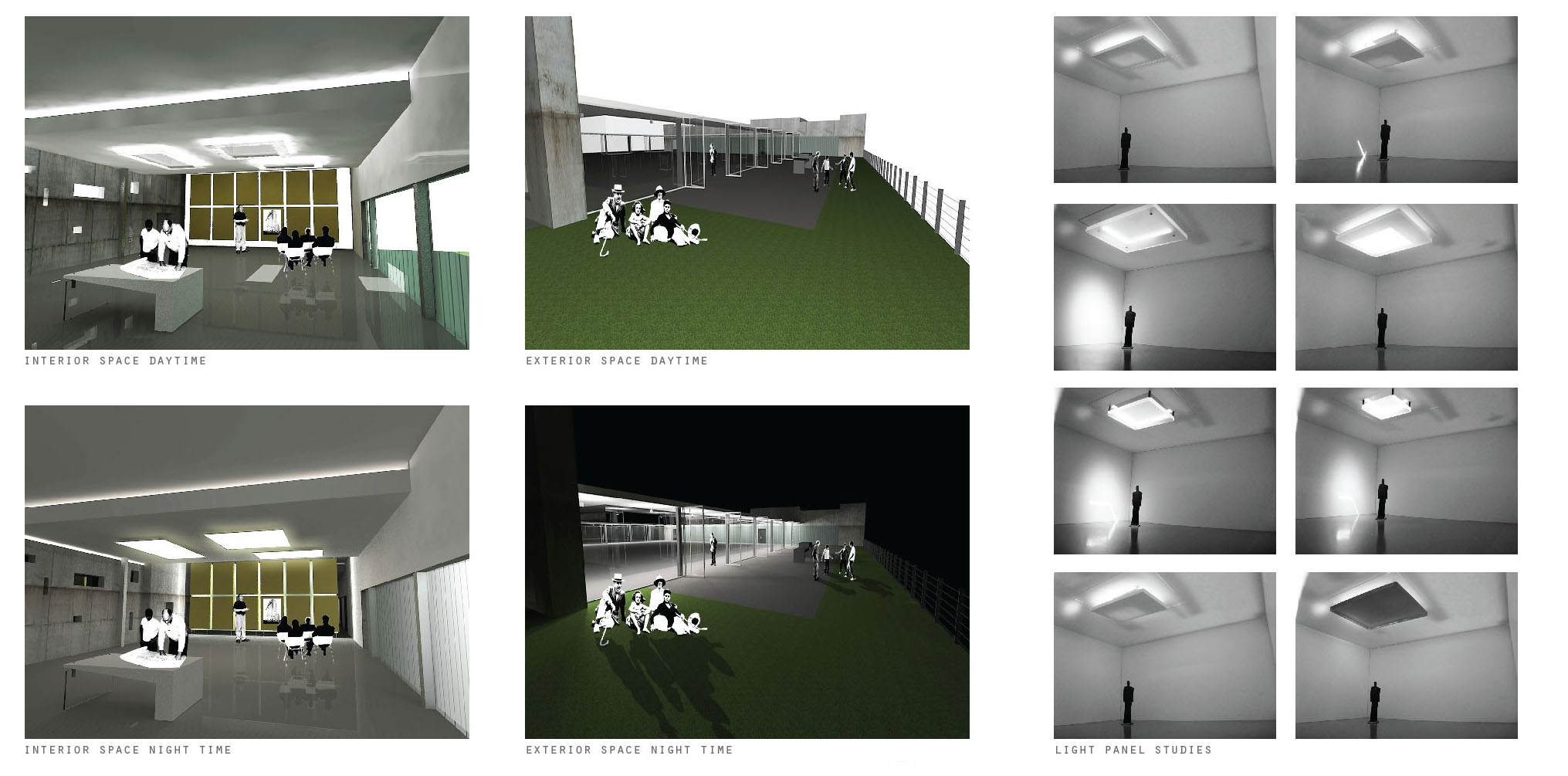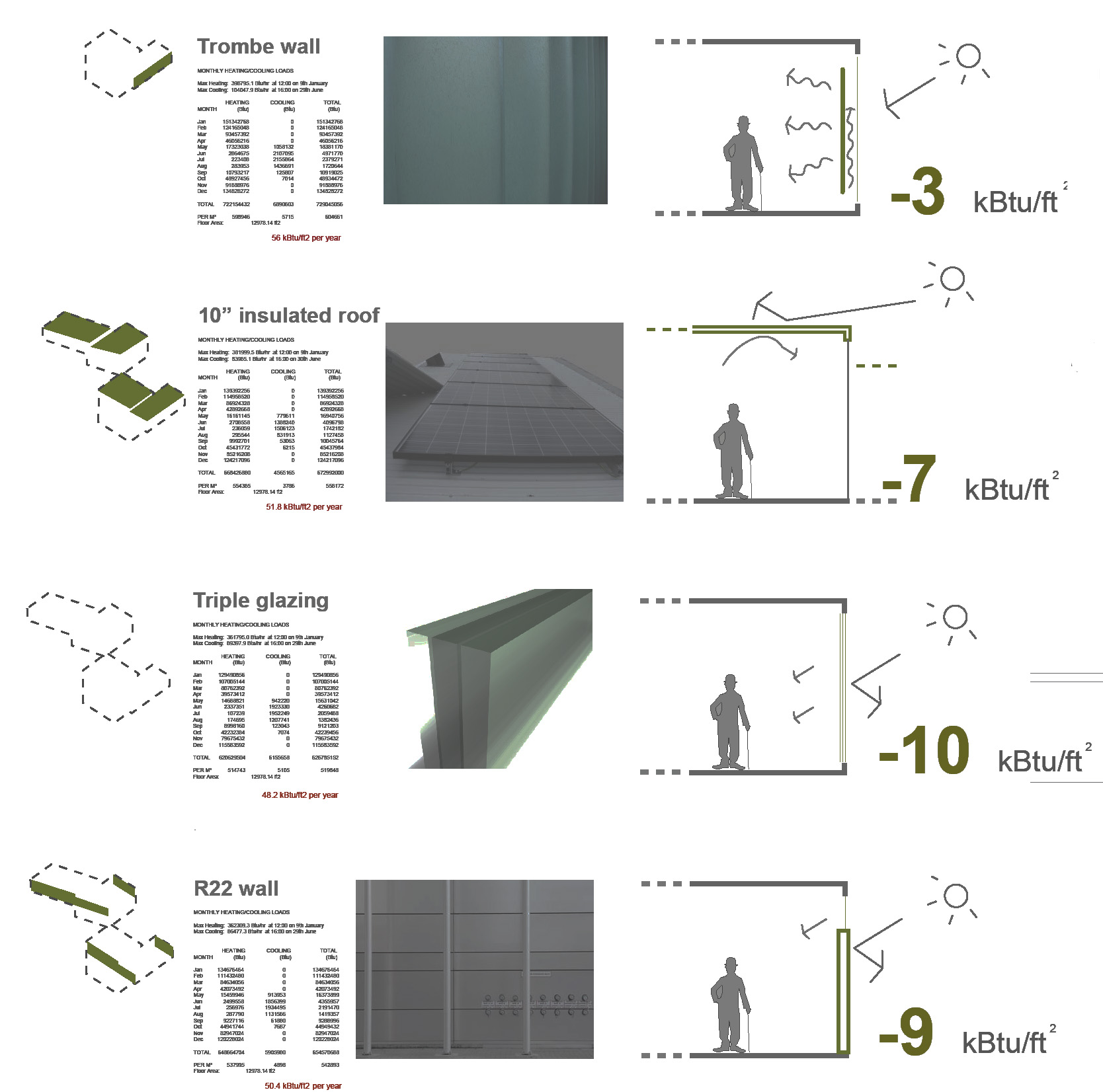|
|
| |
The Carbon Neutral Design Project: |
Carbon Neutral Teaching: Curriculum Materials Development |
Mary Guzowski, Loren Abraham, and Ian McLellan
University of Minnesota |
Spring 2008 6.5 week TECHNOLOGY MODULE- Luminous and Thermal Design: An Ecological Approach to Zero-Energy Carbon Neutral Design
Optimizing Building Performance & Thermal Loads

Design Performance Objective |
Thermal Loads Analysis
Thermal studies comparing and contrasting thermal design strategifes and materials.
|
Students: Atta, Moua, and Park
|
Software/Tools: |
|
|
Spring 2008 6.5 week TECHNOLOGY MODULE- Luminous and Thermal Design: An Ecological Approach to Zero-Energy Carbon Neutral Design
Optimizing Building Performance & Thermal Loads
• To gain experience in thermal design refinement and iterative analysis.
• To develop the knowledge and skills needed to optimize passive solar design and thermal design components in envelope and environmental systems design.
• To understand and compare the metrics of thermal design performance and related impact on energy use in buildings.
|
Investigative Strategy |
In Project Three students explored the process of design optimization through the development of a hypothesis that was quantitatively analyzed using parameter isolation, iterative simulation, and thermal assessments. Students continued to study their earlier design proposal to optimize passive thermal design parameters based on the findings of their previous daylighting analysis and conclusions. They refined the design and tested the thermal performance concerning energy optimization and passive solar design.
|
Evaluation Process |
• Ecotect was used to test their hypotheses and examine the resulting impacts on building loads and other performance criteria
• Each team was asked to prepare a slide presentation to present their method or process, findings and conclusions
• Written and graphic critique on critical thermal issues and lessons and intersections with earlier studies on bioclimatic and daylighting design
|
|
Information about the Project and Studio |
• course outline
• project outline |
Evaluative Criteria |
• Completeness, clarity and intelligibility of presentation
• Graphic and design quality
• Demonstration of understanding of analysis methods
• Credibility and reasonableness of findings & conclusions
|
Cautions/Possible Confusions |
Emphhsis should be placed on the importance of comparing and contrasting thermal design strategies (massing, section, evelope) to understand the design implications for thermal performance. The project is intended to encourage experimentation and to gain qualitative and quantitative understanding of thermal design as it is embodied in design decisions. The project is not seeking a single answer or solution. |
Range of Applicability in terms of CLIMATE |
ALL |
Range of Applicability in terms of TYPE |
ALL |
Reference Material |
|
Duration of Exercise |
One and a half weeks for Phases One and Two. |
Degree of Difficulty / Previous Knowledge Required |
Introductory graduate level. |
| |

Thermal Loads Analysis
Students: Karlberg, Voldhouse, and Young
Ecotect studies comparing the thermal performance for varied thermal and material strategies. |
|
|
|
|

